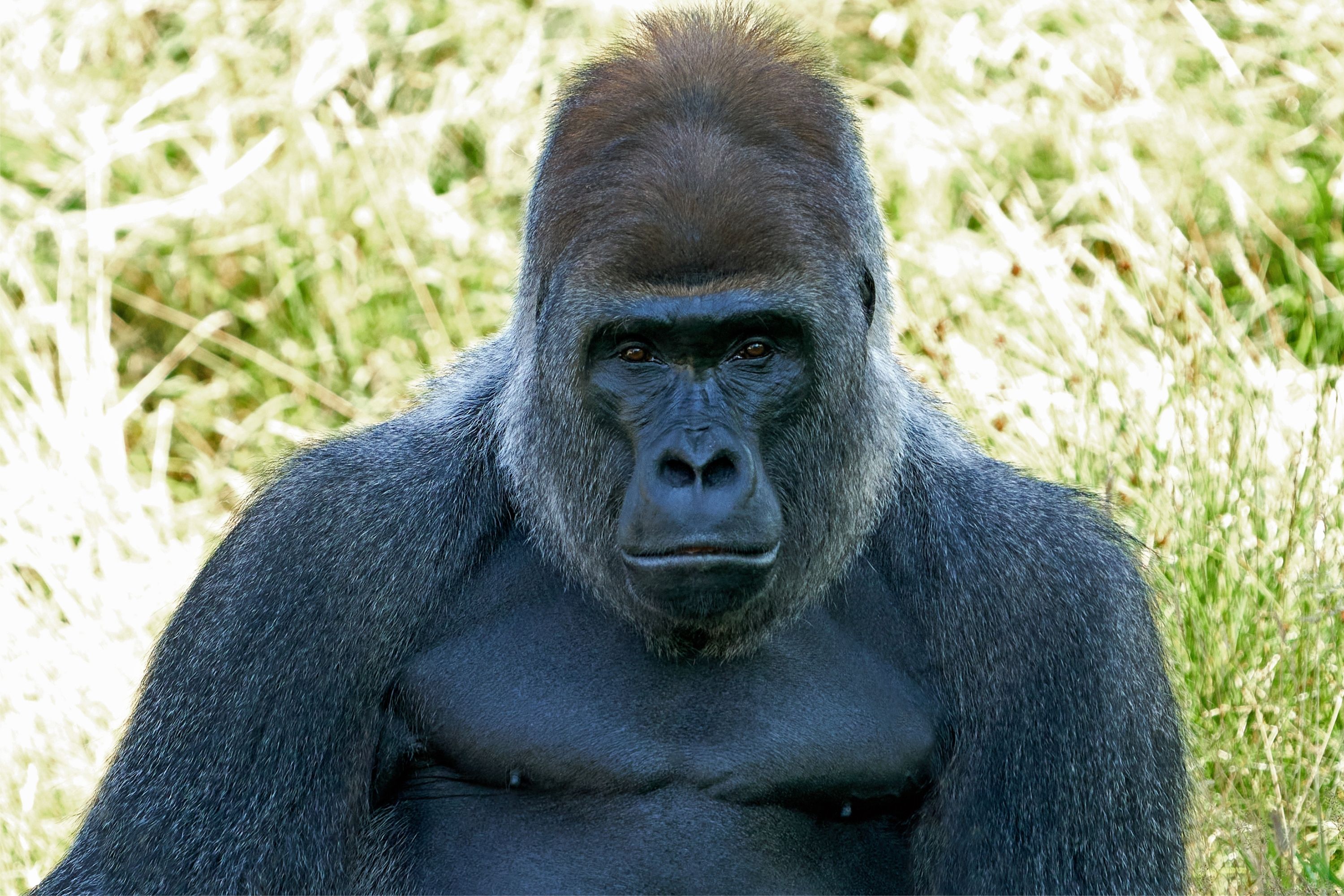Western gorilla
(Gorilla gorilla)

Description
The western gorilla (Gorilla gorilla) is a great ape found in Africa, one of two species of the hominid genus Gorilla. A large and robust animal, with a large male weighing around 168 kilograms (370 lb), their fur is significantly lighter in color than the eastern gorilla, Gorilla beringei, and geographically isolated from them in a region at the midwest of the African continent. Two subspecies are recognised, Gorilla gorilla diehli (Cross River gorilla) is limited to a smaller range in the north at the border of Cameroon and Nigeria, both are listed Critically Endangered. Western gorillas are generally lighter colored than eastern gorillas. Western lowland gorillas have black, dark grey or dark brown-grey hair with a brownish forehead. Males average 167 cm (5 ft 5.7 in) although reaching a height up to 176 cm (5 ft 9.3 in), with males having an average weight of 168 kilograms (370 lb) and females weighing 58 to 72 kilograms (128 to 159 lb). Captive western gorillas average 157 kg (346 lb) in males and 80 kg (176 lb) in females. Another source describes the weight of wild male western lowland gorillas as 146 kg. The Cross River gorilla differs from the western lowland gorilla in both skull and tooth dimensions. Western gorillas live in groups that vary in size from two to twenty individuals. Such groups are composed of at least one male, several females and their offspring. A dominant male silverback heads the group, with younger males usually leaving the group when they reach maturity. Females transfer to another group before breeding, which begins at eight to nine years old; they care for their young infants for the first three to four years of their lives. The interval between births, therefore, is long, which partly explains the slow population growth rates that make the western gorilla so vulnerable to poaching. Due to the long gestation time, long period of parental care, and infant mortality, a female gorilla will only give birth to an offspring that survives to maturity every six to eight years. Gorillas are long-lived and may survive for as long as 40 years in the wild. A group's home range may be as large as 30 square km, but is not actively defended. Wild western gorillas are known to use tools. Western gorillas' diets are high in fiber, including leaves, stems, fruit, piths, flowers, bark, invertebrates, and soil. The frequency of when each of these are consumed depends on the particular gorilla group and the season.
Taxonomic tree:







